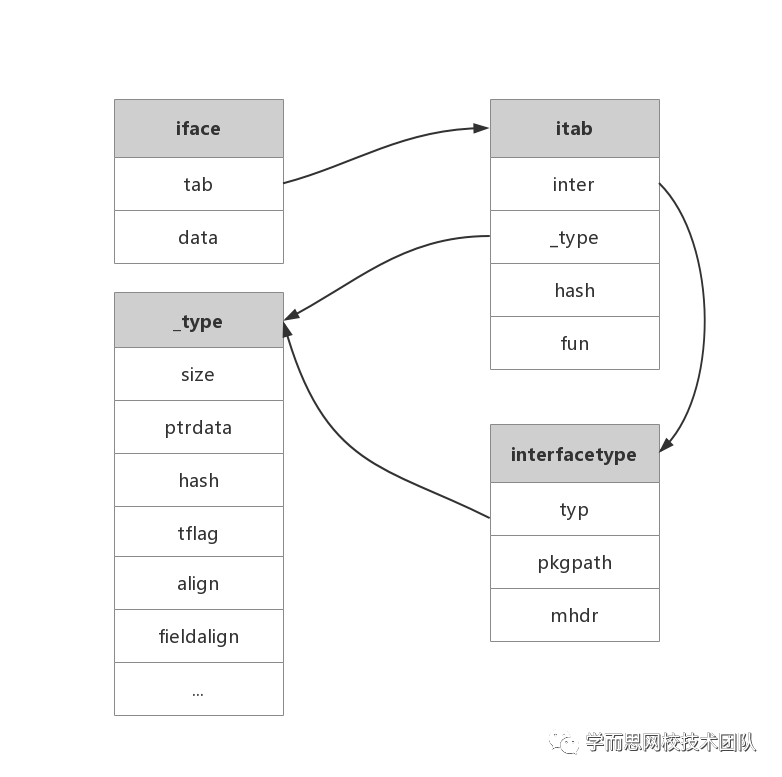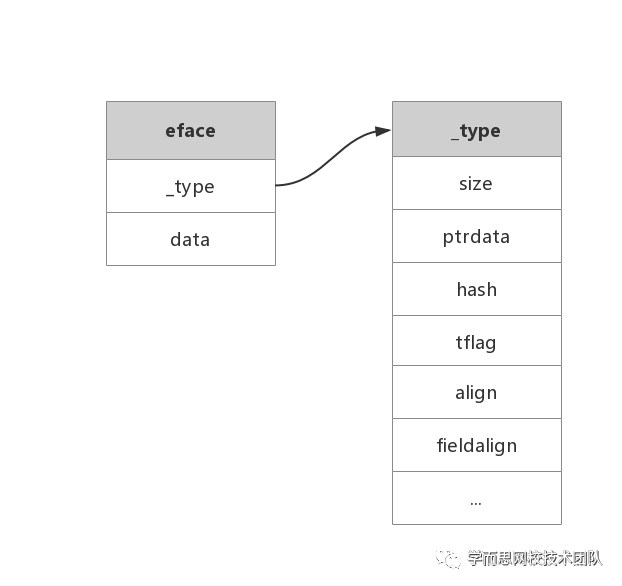interface
接口类型
接口是一种抽象类型,它没有暴露所含数据的布局或者内部结构,当然也没有哪些数据的基本操作,所提供的仅仅是一些方法。当你拿到一个接口类型的变量,你无从知道它是什么,但你能知道它能做什么,或者更精确地讲,仅仅是它提供了哪些方法。
接口定义
Go语言提供了 interface关键字,接口中只能定义需要实现的方法,不能包含任何的变量
Go语言中的接口类型会根据是否包含一组方法而分成两种不同的实现,分别为包含一组方法的iface结构体和不包含任何方法的eface结构体
iface
//runtime/runtime2.go
type iface struct {
tab *itab
data unsafe.Pointer
//unsafe.Pointer类型是一种特殊类型的指针,它可以存储任何变量的地址(类似C语言的void*)
}
//runtime/runtime2.go
type itab struct {
inter *interfacetype
_type *_type
hash uint32 // copy of _type.hash. Used for type switches.
_ [4]byte
fun [1]uintptr // variable sized. fun[0]==0 means _type does not implement inter.
}
//runtime/type.go
type interfacetype struct {
typ _type
pkgpath name
mhdr []imethod
}
itab用于表示具体类型和接口类型关系
inter是接口类型定义信息_type是具体类型的信息hash是_type.hash的拷贝,在类型转换时,快速判断目标类型和接口中类型是否一致fun是实现方法地址列表,虽然fun固定长度为1的数组,但是这其实是一个柔型数组,保存元素的数量是不确定的,如有多个方法,则会按照字典顺序排序
interfacetype是描述接口定义的信息
_type接口的类型信息pkgpath是定义接口的包名mhdr是接口中定义的函数表,按字典序排序

eface
//runtime/runtime2.go
type eface struct {
_type *_type
data unsafe.Pointer
}
